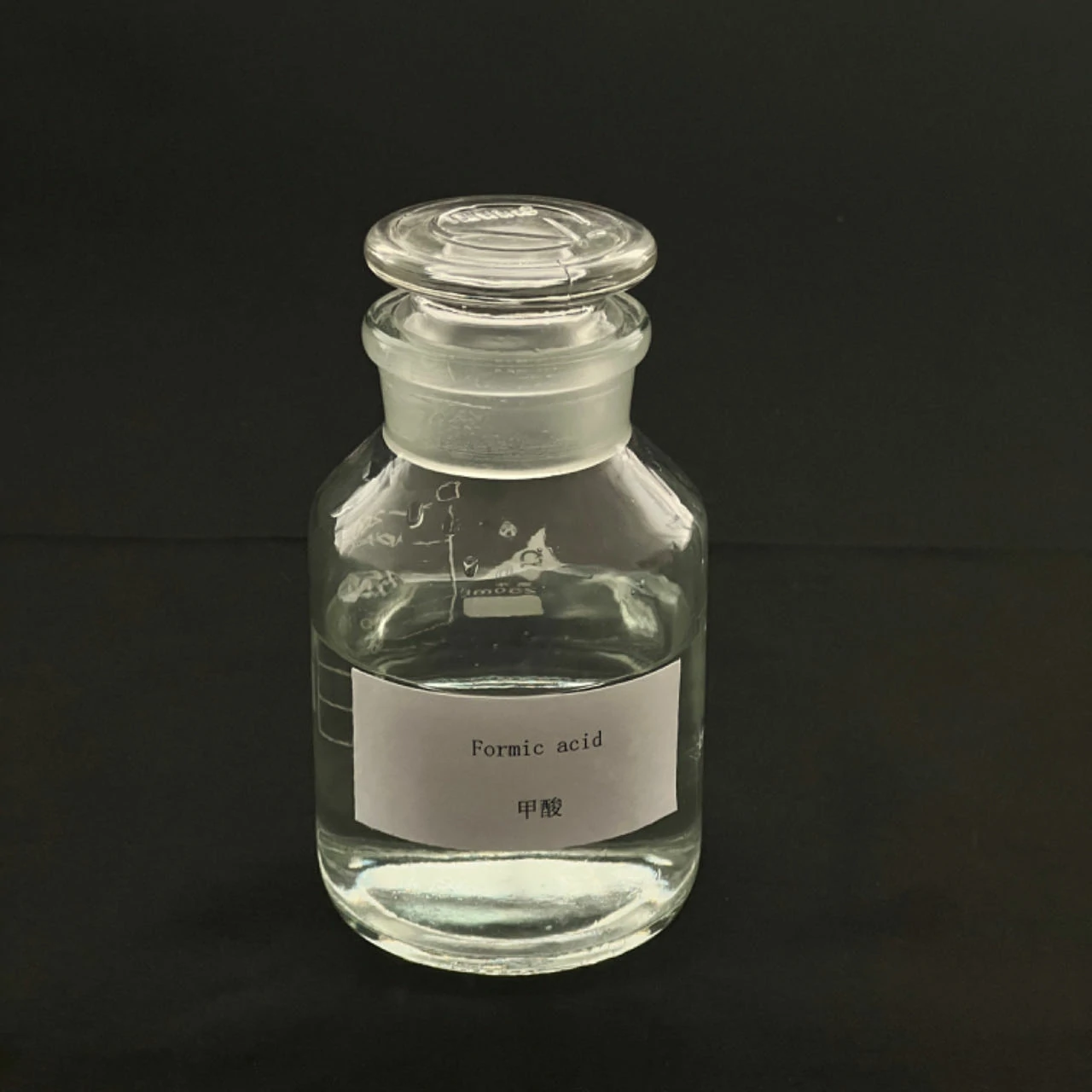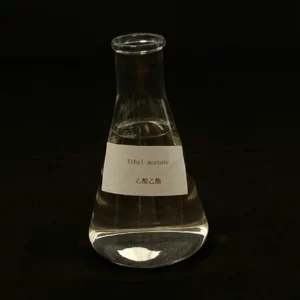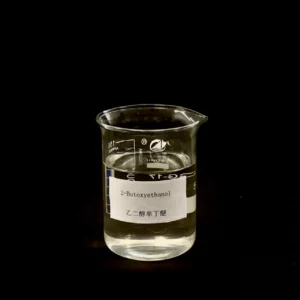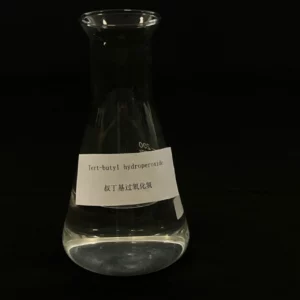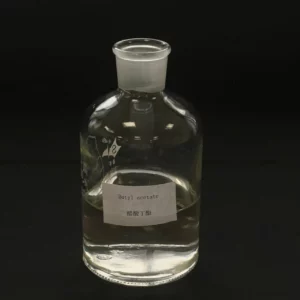Kimi luan një rol jetësor në industri të ndryshme, nga farmaceutikë në shkencën e materialeve. Në këtë udhëzues gjithëpërfshirës, Ne do të shqyrtojmë në pronat, aplikime, dhe rëndësia e disa komponimeve kimike: Hidroperoksidi Tert-Butil, Acidi formik, DBU (1,8-Diazabiciklo[5.4.0]undek-7-ene), Benzil klorur, dhe kripë amonit. Këto komponime gjejnë aplikime në sintezën organike, proceset industriale, dhe kërkime. Bashkohuni me ne ndërsa eksplorojmë karakteristikat unike dhe përdorimet e gjithanshme të këtyre kimikateve, duke hedhur dritë mbi rëndësinë e tyre në fusha të ndryshme.

Hidroperoksidi Tert-Butil: Agjent oksidues i gjithanshëm
Hidroperoksidi Tert-Butil (Tbhp) nga Kinë Tert-butil Prodhues hidroperoksid, është një peroksid organik i përdorur gjerësisht si një agjent oksidues në reaksione të ndryshme kimike. Zakonisht është përdorur në sintezën e komponimeve organike, siç janë alkoolet, ketone, dhe eterët. TBHP shfaq reaktivitet dhe selektivitet të lartë, duke e bërë atë një mjet të vlefshëm për kimistët organikë. Për më tepër, TBHP gjen aplikime në proceset e polimerizimit, ku vepron si iniciator ose bashkë-iniciator. Aftësia e tij për të gjeneruar radikale të lira e bën atë të përshtatshme për fillimin e reaksioneve radikale. Megjithatë, Kujdes duhet të ushtrohet për shkak të rreziqeve të mundshme të tij, përfshirë ndezshmërinë dhe ndjeshmërinë e tij ndaj shokut ose nxehtësisë.
Acidi formik: Një përbërje shumëfunksionale
Acidi formik nga Furnizues i acidit formik të Kinës, është e pangjyrë, Lëngu i fortë me një gamë të gjerë aplikimesh. Zakonisht përdoret si ruajtës, agjent antibakterial, dhe agjent zvogëlues. Në industrinë e tekstilit, Acidi formik është i punësuar për ngjyrosjen dhe proceset e mbarimit. Shërben gjithashtu si një mpiksje në prodhimin e gomës. Për më tepër, Acidi formik gjen përdorimin si një shtesë të ushqimit, Mundësimi i tretjes së përmirësuar në bagëti. Mund të përdoret gjithashtu si një agjent pastrimi, pH rregullues, dhe katalizatori në reaksione të ndryshme kimike. Shkathtësia e tij dhe toksiciteti relativisht i ulët e bëjnë acidin formik një përbërje të rëndësishme në disa industri.
DBU (1,8-Diazabiciklo[5.4.0]undek-7-ene): Një bazë organike e gjithanshme
Dbu siç është bërë nga Kinë dbu benzil klorur klorur furnizuesit e kripës së amonit, E njohur edhe si 1,8-diazabicyclo[5.4.0]undek-7-ene, është një bazë organike shumë e dobishme. Gjen aplikim të gjerë në sintezën organike, veçanërisht në reagimet që përfshijnë katalizën e bazës acidike. DBU është i njohur për aftësinë e tij për të privotuar acidet dhe formimin e kripërave, duke e bërë atë të vlefshme në transformime të ndryshme. Shpesh përdoret si katalizator në sintezën e farmaceutikëve, polimere, dhe komponime të tjera organike. Karakteristikat e forta themelore të DBU dhe përputhshmëria e saj me një gamë të gjerë të tretësve e bëjnë atë një zgjedhje popullore në industrinë kimike.
Benzil klorur: Një bllok ndërtimi kyç
Benzil Kloruri është një përbërje organike me aplikime të shumta në sintezën e kimikateve të ndryshme. Shërben si një bllok ndërtimi kryesor në prodhimin e farmaceutikëve, aromat, dhe ngjyra. Kloruri benzil përdoret zakonisht për futjen e grupit benzil në molekula organike, Ndërsa i nënshtrohet reaksioneve të zëvendësimit nukleofilik. Është gjithashtu i punësuar në sintezën e etherëve të benzilit, esterë, dhe aminat. Megjithatë, Kujdes duhet të ushtrohet gjatë trajtimit të klorurit benzil për shkak të natyrës së tij gërryese dhe toksike.
Kripë amoniumi: Aplikime të ndryshme
Kripërat e amoniumit janë komponime të gjithanshme me një gamë të gjerë aplikimesh në industri të ndryshme. Ata e gjejnë përdorimin si plehra, retardantë flakë, dezinfektues, dhe rregullatorët e pH. Kripërat e amoniumit janë përdorur gjithashtu në industrinë farmaceutike si përbërës aktivë ose eksipientë në formulimet e drogës. Për më tepër, Ato shërbejnë si surfaktantë dhe emulsifikues në produktet e kujdesit kozmetik dhe personal. Karakteristikat e ndryshme dhe aplikimet e kripërave të amoniumit i bëjnë ato komponime të vlefshme në sektorë të shumtë.
konkluzioni
Komponime kimike si terti-butil hidroperoksid, Acidi formik, DBU, Benzil klorur, dhe kripa amoniumi luajnë role thelbësore në kërkimet shkencore, proceset industriale, dhe aplikimet e përditshme. Karakteristikat e tyre unike dhe funksionalitetet e gjithanshme i bëjnë ata mjete të vlefshme për kimistët, inxhinierë, dhe studiuesit në fusha të ndryshme. Kuptimi i karakteristikave dhe aplikimeve të këtyre komponimeve na mundëson të shfrytëzojmë potencialin e tyre në sintezën organike, shkenca e materialeve, farmaceutikë, dhe përtej. Duke eksploruar përdorimet e ndryshme të këtyre kimikateve dhe duke iu përmbajtur protokolleve të sigurisë, Ne mund të përdorim përfitimet e tyre duke siguruar trajtimin dhe aplikimin e përgjegjshëm në përpjekjen tonë për përparim shkencor dhe inovacion.

